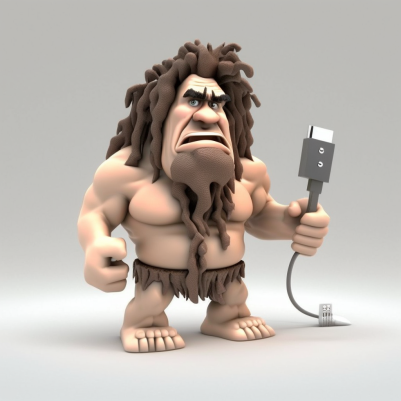The Universal Serial Bus, or USB, is a technology that has revolutionized the way we connect and power devices.
From computers to smartphones, USB has become the standard for data transfer and charging. But how did this technology come to be?
In this article, we will delve briefly into the history of USB and explore its evolution from its inception to the present day.
The Beginning of USB
The development of USB technology began in the early 1990s, when a group of seven companies, including IBM, Intel, and Microsoft, came together to create a standard for connecting peripherals to computers.

The goal was to create a universal standard that would make it easier for consumers to connect devices to their computers and eliminate the need for multiple ports and connectors.
USB 1.0
In 1996, the first version of USB, USB 1.0, was released. This initial version had a data transfer rate of 1.5 Mbps (megabits per second) and was primarily used for connecting keyboards, mice, and other low-speed peripherals to computers.
While it was a step forward in terms of standardization, USB 1.0 had its limitations and was not widely adopted.
USB 1.1
Just one year later, in 1998, USB 1.1 was released. This version improved upon the data transfer rate of USB 1.0, increasing it to 12 Mbps.
Additionally, USB 1.1 introduced the ability to connect multiple devices to a single port through the use of hubs. Despite these improvements, USB 1.1 still struggled to gain widespread adoption.
USB 2.0
It wasn’t until 2000 that USB technology truly began to take off with the release of USB 2.0. This version of USB brought a significant increase in data transfer rates, up to 480 Mbps, making it suitable for high-speed devices such as external hard drives and digital cameras.
USB 2.0 also introduced the ability to power devices through the USB connection, eliminating the need for an external power source. With its faster speeds and new capabilities, USB 2.0 quickly became the standard for connecting devices to computers.
USB 3.0
In 2008, USB 3.0 was released, bringing even faster data transfer rates of up to 5 Gbps (gigabits per second) and improved power management.
This version of USB was designed to support faster devices such as solid-state drives and 4K displays.
It also introduced new features such as the ability to connect multiple devices to a single port through the use of hubs, and improved power management for charging devices.
USB-C
The most recent advancement in USB technology is the USB-C connector, which was released in 2014. USB-C is a reversible connector, meaning it can be plugged in either direction (a solution to the difficulty in getting a USB plug in the right way first time!), and it supports a wide range of protocols including USB 3.1, Thunderbolt 3, and DisplayPort.
It also supports power delivery of up to 100 watts, allowing for faster charging of devices. USB-C has quickly become the standard for connecting and charging devices, particularly in the world of laptops and smartphones.
Conclusion
From its humble beginnings in the 1990s to its current state as a universal standard, USB technology has come a long way.
Each new version has brought faster speeds and improved capabilities, making it easier to connect and power devices. As technology continues to evolve, it’s likely that we will see even more advancements in USB technology in the future.

